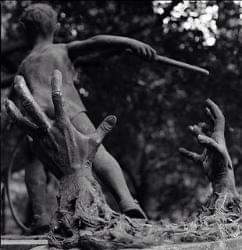He was one of the first Newfoundlanders to leave the island to join the front
He was one of the first Newfoundlanders to leave the island to join the front... He survived there for 3 years with many hospital stays... William Noseworthy
William Noseworthy is born 7th August 1893 at 87 King's Road - St John's - Newfoundland to Ambrose Noseworthy (1859-???) and Elizabeth Ryan (1862-???)
He has 4 brothers - Philip George (1887-???) - Edward Charles (1889-1921) - John Henry (1891-1978) - Frederick (1895-1898) and 2 sisters - Elizabeth (1883-???) - Mary Ann (1885-???)
Before the outbreak of war, William worked as a teamster, truckman and longshoreman.
The war changed his plans for the future and William enlisted as a private 3rd September 1914 at the Church Lads Brigade Armory in St. John's - capital city of the Dominion of Newfoundland.
He passed his medical examination in the same office on 29th September 1914 and was declared "fit for foreign service".
Nothing stood in the way of his leaving for the war.
He was part of the first contingent of Newfoundland soldiers to leave the island in the direction of the war and embarked on 3rd October 1914 aboard the Florizel which will join the convoy transporting the 1st Canadian Division across the Atlantic.
Landed in the United Kingdom, the Newfounland contingent began a period of training first in southern England, then in Scotland at Fort George, Edinburgh Castle and Stobs Camps near Hawick.
In early August 1915, William returned to England to undergo final two weeks training and be reviewed at Aldershot by King George V.
He embarked from Devonport 20th August 1915 on the passenger-liner Megantic requisitioned for the occasion bound for Cairo where he spent two weeks in cantonment.
William and the 1st Battalion landed in Suvla Bay on the Gallipoli Peninsula.
William escaped battle wounds but was admitted 8th December 1915 to the 54th Casualty Clearing
Station at Suvla Bay with jaundice.
This Casualty Clearing Station being in a very exposed position and in an area called to be evacuated shortly after, William will be transferred to Mudros, a rear base of the Commonwealth on the Greek island of Lemos where he will spend the end of the year 1915 in convalescence.
At the end of his convalescence, he embarked from Port-Said 2nd March 1916 bound for Marseilles at first before being transferred then to the British Expeditionary Force Base Depot in Rouen.
William left on 15th April 1916 for Englebelmer, a small village located 3km behind the front line.
William and his unit first occupied themselves with work in the communications trenches before taking up position in the front line trenches 22nd April 1916.
William was evacuated about 88th
Field Ambulance, a week later, 29th april 1916, suffering from scabies.
He was treated and returned to his place at the front 12th May 1916.... for a week.. before being evacuated again to 88th Field Ambulance then subsequently to 4th Casualty Clearing Station - Lilles with Pain Of Unknown Origin 20th May 1916.
He will then be redirected to the 12th General Hospital in Rouen and then embarked on June 7, 1916 aboard Hospital Ship St. Patrick bound for hospitals in England.
William will be admitted next day 3rd London
General Hospital - Wandswort where he was diagnosed with inflammation of the inner ear.
After his recovery, William resumed military life at the Newfoundland Regiment depot in Ayr 15th July 1916.
Shortly after his return, he had to receive medical treatment again, but this time for venereal disease.
The care will be administered to him until the beginning of the year 1917 within the hospitals of the camps without any permission being granted to him.
Having recovered, William was part of the 22nd Re-inforcement which sailed from Southampton 25th February 1917 bound for Rouen where the men underwent a period of training before joining the Newfoundland Regiment on the front.
He will once again be hospitalized at the 1st Stationary Hospital in Rouen with a diagnosis of "Not Yet Determined problem" 11th April 1917...
He would stay there for just over a month before returning to depot 22nd May 1917 and then rejoining his unit on the front 19th June 1917 while in the Bonneville area.
At the end of that month, the 1st Newfoundlanders Regiment resumed command of the Ypres Salient in preparation for the Third Battle of Ypres.
The Regiment will participate in the fighting on Steenbeek in August and on Broembeek in October.
William survived the first one and was promoted to Lance Corporal 17th September 1917.
He was less fortunate and was killed in action during the second 9th October 1917.
He was 24 years old.
He is now commemorated in Cement House Cemetery.
William's picture from rnfldrmuseum.ca












Comments
Post a Comment